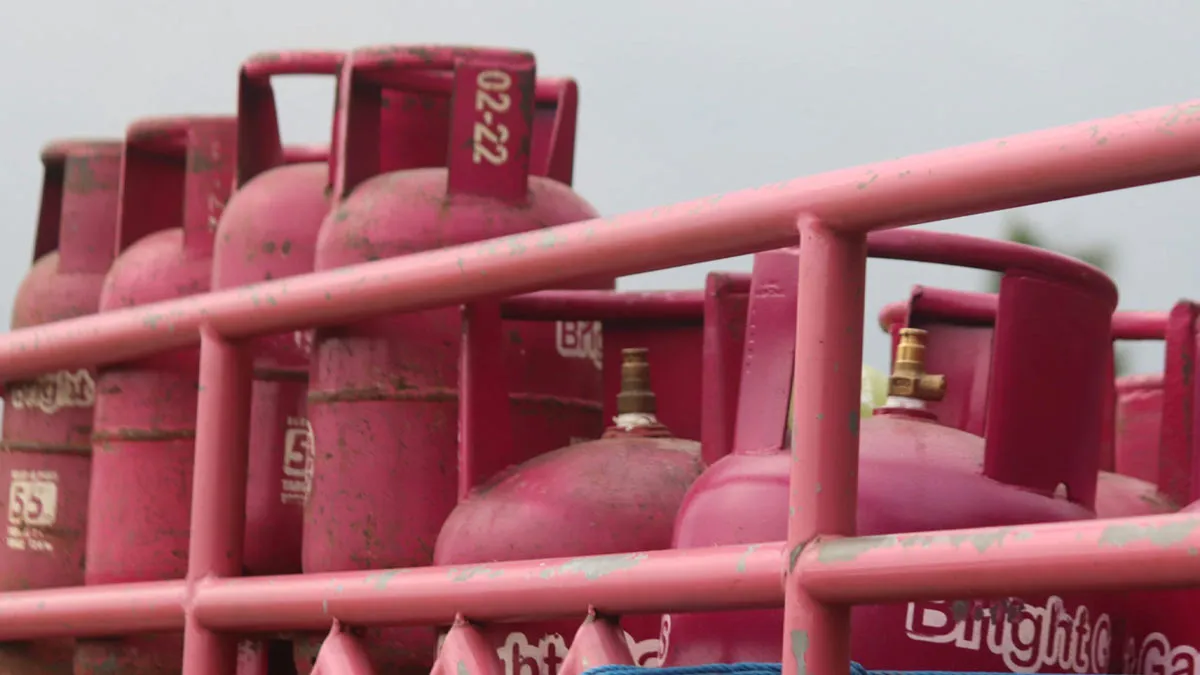Gas cylinders are a common part of our homes, especially in the kitchen. They help us cook food quickly and efficiently. But have you ever noticed a strange code written on your gas cylinder? It’s usually found on the metal strip near the handle. Most people don’t pay much attention to it, but it actually has a very important meaning. Read on to learn what this number means and why you should always check it when receiving a gas cylinder.
Number On Your Gas Cylinder: What Does It Really Mean?
When you receive a new gas cylinder, look closely at the metal strip that connects the top ring (handle) to the main body of the cylinder. You’ll notice an alphanumerical code like A24, B22, C26, etc. This code tells you when the cylinder needs to go through safety testing. Let’s break it down:
The letter in the code shows the quarter (three-month period) of the year:
- A = January to March
- B = April to June
- C = July to September
- D = October to December
The number shows the year the cylinder must be tested.
For example:
- A25 means the cylinder should be tested between January and March of 2025.
- C26 means it must be tested between July and September of 2026.
It’s that simple! So next time, if you get a cylinder in October and it says B17, you should not accept it. That means the cylinder missed its safety check, which could be dangerous.
Why Safety Testing Is Important
Gas cylinders can be risky if not maintained properly. A faulty or expired cylinder can leak and, in some cases, explode. To prevent this, each cylinder must go through these strict tests:
- Hydro Test – The cylinder is filled with water and checked for leaks.
- Pneumatic Test – The cylinder is filled with gas at a much higher pressure than normal to see if it can handle stress.
If a cylinder fails any of these tests, it is not used again.Cylinders are usually tested twice during their 15-year lifespan – once after 10 years, then again after 5 years.
How Are Cylinders Made And Approved?
Only companies with proper licences and approvals are allowed to make gas cylinders. In India, for example, a company must have:
- A BIS (Bureau of Indian Standards) licence.
- Approval from the CCOE (Chief Controller of Explosives).

Every cylinder must follow BIS standards and pass strict tests before it is sent out to homes. Even after that, regular checks are done before cylinders are refilled and reused.
What You Should Check When Receiving a Cylinder
When you receive a gas cylinder at home:
- Check the expiry code on the metal strip (A, B, C or D + year).
- Look for any visible damage like dents or cracks.
- Smell for gas to see if there’s any leakage.
- Check the valve to make sure it’s properly sealed and not leaking.
- Never accept a cylinder if you feel something is wrong or if it looks too old.
By simply checking this code, you can avoid using expired or unsafe cylinders. So the next time a new gas cylinder is delivered to your door, take a moment to check the number.
Image Credits: Freepik and Unsplash
If you liked this story, then please share it. To read more such stories, stay connected to HerZindagi.

Take charge of your wellness journey—download the HerZindagi app for daily updates on fitness, beauty, and a healthy lifestyle!



Comments
All Comments (0)
Join the conversation